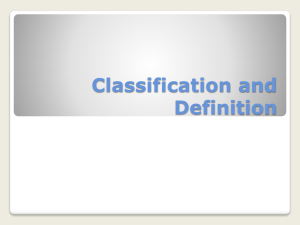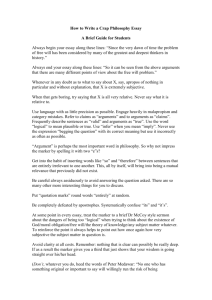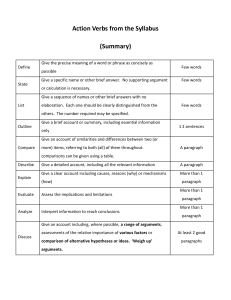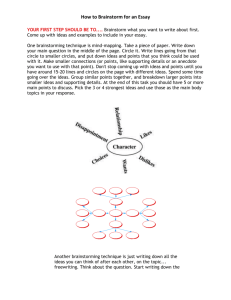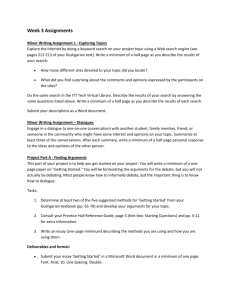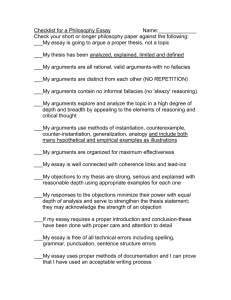harnessing brilliance: generating ideas
advertisement
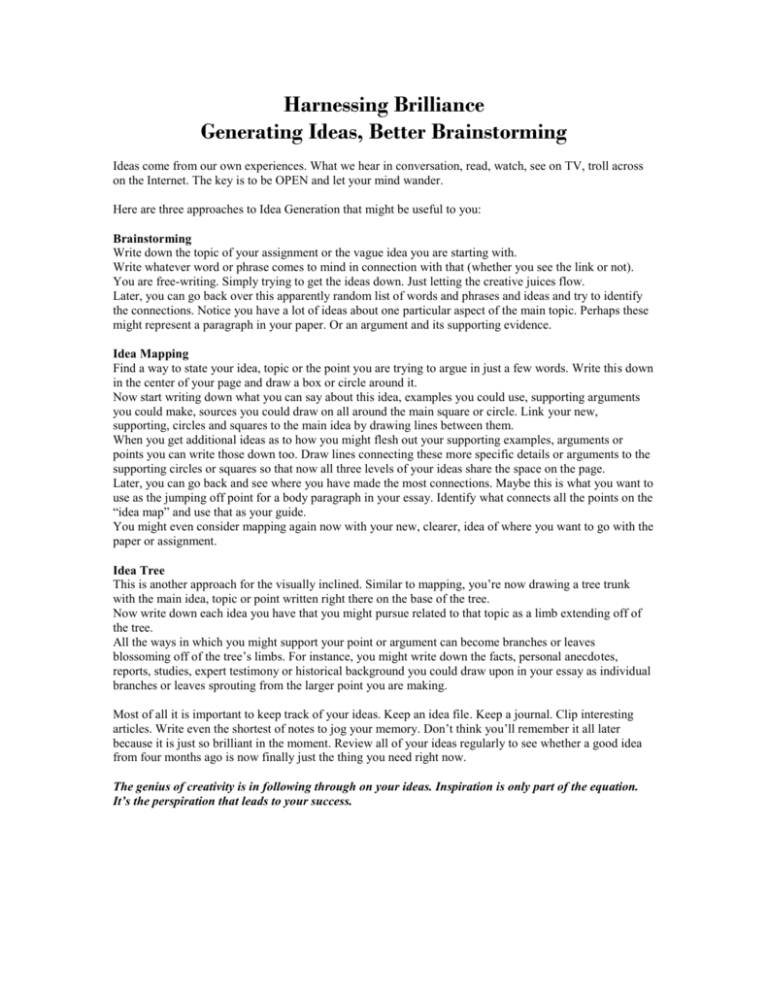
Harnessing Brilliance Generating Ideas, Better Brainstorming Ideas come from our own experiences. What we hear in conversation, read, watch, see on TV, troll across on the Internet. The key is to be OPEN and let your mind wander. Here are three approaches to Idea Generation that might be useful to you: Brainstorming Write down the topic of your assignment or the vague idea you are starting with. Write whatever word or phrase comes to mind in connection with that (whether you see the link or not). You are free-writing. Simply trying to get the ideas down. Just letting the creative juices flow. Later, you can go back over this apparently random list of words and phrases and ideas and try to identify the connections. Notice you have a lot of ideas about one particular aspect of the main topic. Perhaps these might represent a paragraph in your paper. Or an argument and its supporting evidence. Idea Mapping Find a way to state your idea, topic or the point you are trying to argue in just a few words. Write this down in the center of your page and draw a box or circle around it. Now start writing down what you can say about this idea, examples you could use, supporting arguments you could make, sources you could draw on all around the main square or circle. Link your new, supporting, circles and squares to the main idea by drawing lines between them. When you get additional ideas as to how you might flesh out your supporting examples, arguments or points you can write those down too. Draw lines connecting these more specific details or arguments to the supporting circles or squares so that now all three levels of your ideas share the space on the page. Later, you can go back and see where you have made the most connections. Maybe this is what you want to use as the jumping off point for a body paragraph in your essay. Identify what connects all the points on the “idea map” and use that as your guide. You might even consider mapping again now with your new, clearer, idea of where you want to go with the paper or assignment. Idea Tree This is another approach for the visually inclined. Similar to mapping, you’re now drawing a tree trunk with the main idea, topic or point written right there on the base of the tree. Now write down each idea you have that you might pursue related to that topic as a limb extending off of the tree. All the ways in which you might support your point or argument can become branches or leaves blossoming off of the tree’s limbs. For instance, you might write down the facts, personal anecdotes, reports, studies, expert testimony or historical background you could draw upon in your essay as individual branches or leaves sprouting from the larger point you are making. Most of all it is important to keep track of your ideas. Keep an idea file. Keep a journal. Clip interesting articles. Write even the shortest of notes to jog your memory. Don’t think you’ll remember it all later because it is just so brilliant in the moment. Review all of your ideas regularly to see whether a good idea from four months ago is now finally just the thing you need right now. The genius of creativity is in following through on your ideas. Inspiration is only part of the equation. It’s the perspiration that leads to your success.

